When living or visiting Maine, it’s good to which insects can bite and, if any cause serious harm. While most insects in the state are harmless, some are dangerous or destructive. However, these insects play an integral part in their ecosystem. And the delicate balance influences humans’ health, ecology, and agricultural resources. It is important to be able to identify these bugs and take the proper course of action. Therefore, here are the 7 annoying insects in Maine that bite and whether they are dangerous.
1. Bed Bugs
The most common bedbug in Maine is the Cimex lectularius, which is not an insect you want in your home. Their infestation gets out of hand very quickly, and it’s hard to get rid of them. Therefore, many establishments like hotels or Airbnb live in fear of these pests.
Bedbugs have flat, oval-shaped bodies with a striped appearance because of their colored body hair. These tiny, reddish-brown insects have two large mandibles and antennae but no wings, so luckily, they can’t fly. These bugs can live for months without food but prefer to inhabit areas around people, where they always have a food source and prey on both human and animal blood.
Are Bedbugs Dangerous?
While it has never been proven that bedbugs spread disease, they still bite, leaving behind a very itchy mark. These annoying bugs crawl all over you while you sleep, feeding on your blood. So, when you wake in the morning, there are dozens of bites all over your body. Getting rid of bed bugs is no walk in the park. Sometimes it entails destroying furniture and clothes.
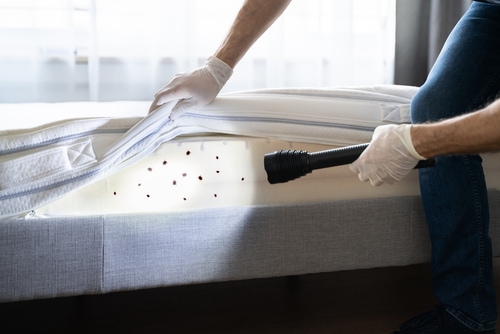
Bedbugs have flat, oval-shaped bodies with a striped appearance because of their colored body hair.
©Andrey_Popov/Shutterstock.com
2. Mosquitos
Unfortunately, the Anopheles quadrimaculatus is the most common mosquito in Maine. These mosquitoes are incredibly dangerous because they spread malaria. Being one of the most common insects in Maine, most people know what they look like. However, since there are over 60 species in the state, there’s a good chance that Anopheles quadrimaculatus is misidentified. But, residents and visitors can protect themselves with repellents.
These mosquitoes have slender, segmented bodies with elongated, feeble-looking legs and feathery antennae. In addition, they have skinny, segmented bodies and a long proboscis, which helps them feed on flower nectar and blood for protein. Females are the ones who spread malaria. Males do not bite humans; they are vegetarians.
Are Mosquitoes Dangerous?
Yes, mosquitoes are dangerous, as they can spread life-threatening diseases. Besides malaria, these annoying insects in Maine can spread the Zika, West Nile, and Dengue virus. So, what are these insects’ purpose? Mosquitoes help control the insect population and are also a protein source for animals like birds. Furthermore, their larvae feed aquatic animals like frogs and fish. In addition, they help pollinate flowers, so they play an essential role in the ecosystem.
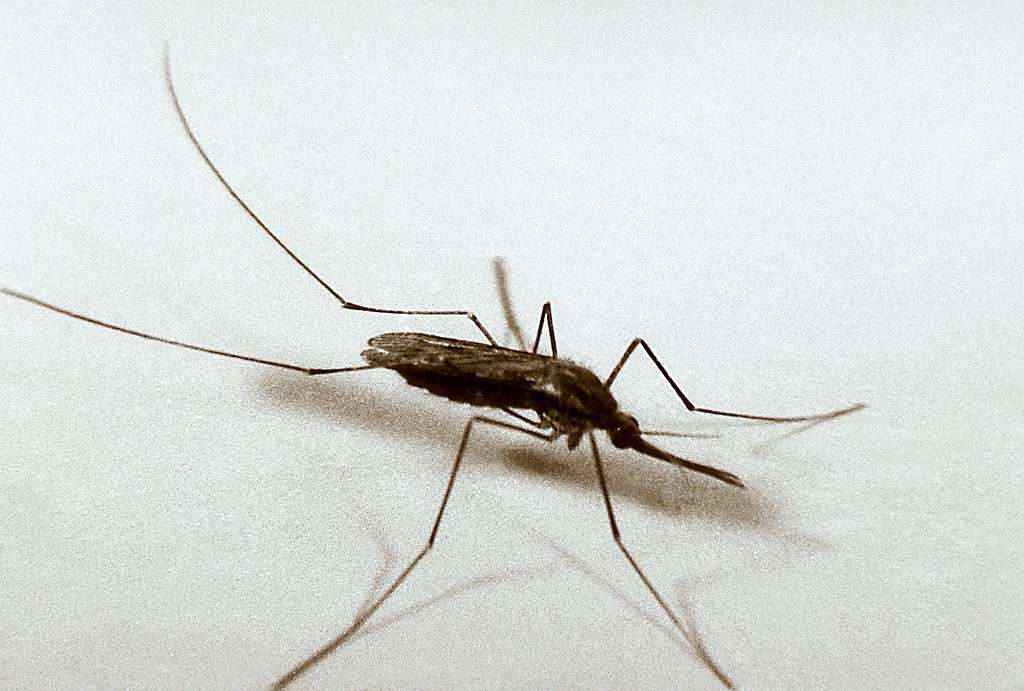
Unfortunately, the
Anopheles quadrimaculatusis the most common mosquito in Maine. These mosquitoes are incredibly dangerous because they spread malaria.
©https://pixnio.com/fauna-animals/insects-and-bugs/mosquito/close-up-photograph-of-an-anopheles-quadrimaculatus-mosquito-on-white-background# – Original / License
3. Black Ants
Black ants are common around homes in Maine. So, it is very likely that they are the ants you spot in a household or building in the state. During the warmer months, people often spot these ants in driveways, grass, and trees. Unfortunately, these ants are one of Maine’s most annoying biting insects. Black ants are shiny, slender, and have 12-segmented antennae. Furthermore, they primarily inhabit woodwork, masonry, or rotten wood in houses. These ants feed on almost anything, including meat, vegetables, candy, and sometimes, other biting bugs.
Are Little Black Ants Dangerous?
While these pests bite, their tiny mandibles prevent them from doing much damage, and you probably won’t even feel it. However, they are a nuisance as they invade any open food source in your home. Additionally, they can destroy wood, plants in your garden, or even your home by chewing through insulation or wiring.
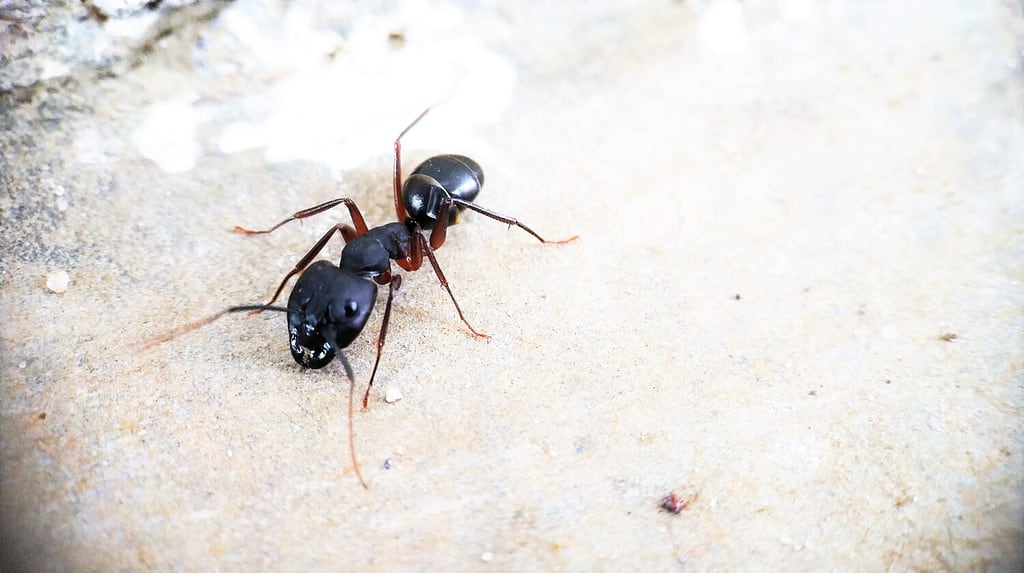
Black ants are common around homes in Maine. So, it is very likely that they are the ants you spot in a household or building in the state.
©IamBijayaKumar/Shutterstock.com
4. Fleas
There are over 2000 species of fleas, so there is a good chance you might get bitten by one in Maine, especially if there are lots of animals around. However, the most common species in Maine is the cat flea (Ctnocephalides felis). These fleas have hard reddish-brown bodies, and they can jump because of their powerful back legs. Cat fleas primarily feed on warm-blooded animals but will bite humans if their normal hosts are unavailable. They are tiny, barely 1/8th of an inch long, so it’s hard to see them.
Are Fleas Dangerous?
While there are thousands of species of fleas, all of them exhibit similar characteristics, and their bites result in irritating, itchy, and uncomfortable red marks. Some can also carry pathogens, causing diseases when they bite. Therefore, if you have an infestation, ensure to buy the proper pesticide to eliminate and prevent further infestation.
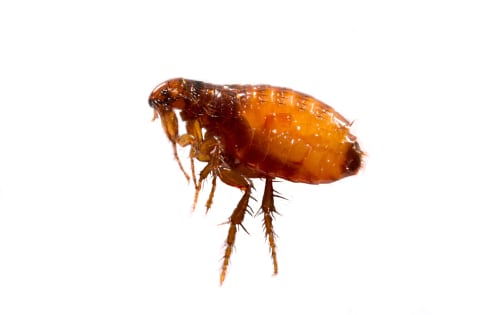
These fleas have hard reddish-brown bodies, and they can jump because of their powerful back legs.
©Vera Larina/Shutterstock.com
5. Bees
Summer in Maine means the bees are out pollinating the flowers and sneaking into soda cans. The most common species in the state is the Apis mellifera, fondly known as the Western honey bee. Like other biting insects, bees have three segments, the head, thorax, and abdomen. The Western honey bee is light to dark brown, with dark bands on their abdomens. They have heart-shaped heads and barrel-shaped abdomens.
Are Honey Bees Dangerous?
While honey bee stings hurt, they are not dangerous or toxic unless you are allergic. However, it can cause swelling and severe pain for a few hours. But, if you get stung multiple times, seek medical attention immediately. When stung by multiple bees, it can cause a systemic toxic reaction, resulting in symptoms including diarrhea, vomiting, hyperthermia, agitation, and difficulty breathing.
Bees are extremely important to the environment. Without them, there would be no fauna, which in turn, means no oxygen. Additionally, they produce delicious honey. So, the next time you see a bee, don’t try to kill it. Instead, admire it for all its hard work.
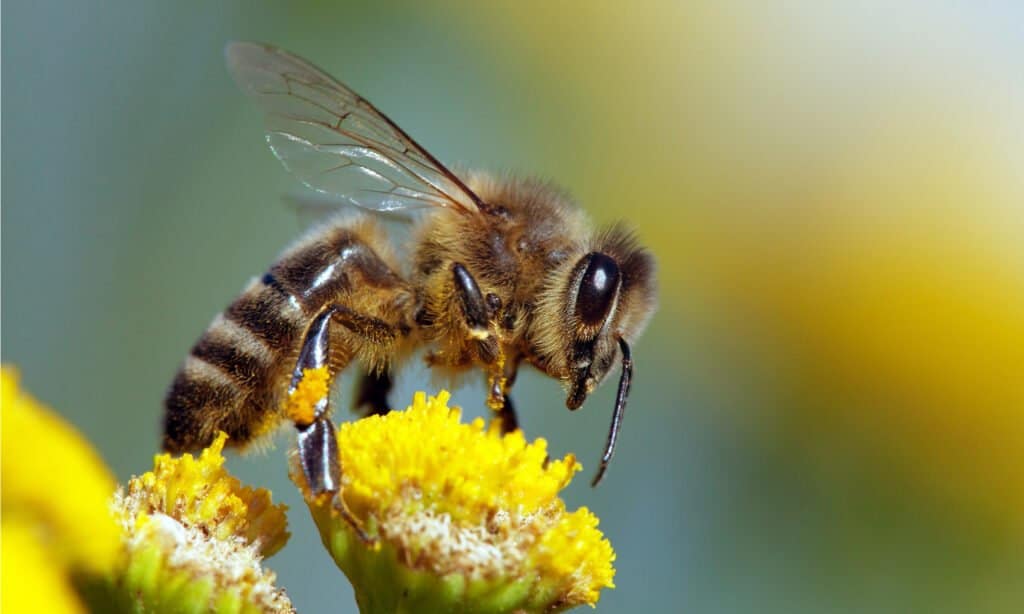
Honeybee stings are painful. They can be toxic for people with allergies or who are stung multiple times.
©Daniel Prudek/Shutterstock.com
6. Black Flies
One of the most annoying insects in Maine is the black fly. It is not unusual to see clouds of little black flies in Maine, especially around the woods during summer. There are 48 species of black flies in the Pine Tree State, and there’s a running joke that these flies are the state bird. Their lifecycle requires running water. As a result, they often occur near rivers or streams. These flies actively feed during the day.
Are Black Flies Dangerous?
When these annoying flies bite humans, it results in several reactions, including an itchy bump or something more serious, like respiratory issues and swollen lymph nodes. You can prevent black fly bites by using insect repellents or wearing light clothing, as these flies are attracted to darker colors.

It is not unusual to see clouds of little black flies in Maine, especially around the woods during summer.
©Vinicius R. Souza/Shutterstock.com
7. No-See-Ums
No-see-ums prefer warm, humid weather, so they are especially prominent in Maine during the summer. They derived their name from their microscopic size and transparent bodies, so you simply don’t see them. These annoying insects don’t have a preference when it comes to food; they bite anything with blood. In fact, they sometimes feed on mosquitoes or black flies.
Are No-See-Ums Dangerous?
These insects might be annoying, but the species in the United States are not dangerous to humans. However, they can infect animals like cattle, horses, and deer with viruses causing epizootic hemorrhagic disease and blue tongue.

No-see-ums prefer warm, humid weather, so they are especially prominent in Maine during the summer.
©Henrik Larsson/Shutterstock.com
The photo featured at the top of this post is © Astrid860/ via Getty Images
Thank you for reading! Have some feedback for us? Contact the AZ Animals editorial team.







